
Please note: These are reviews for two separate movies, requiring separate admission. Once again, The Carolina has booked The Oscar-Nominated Short Films for us. What started as a kind of experiment in 2010 has now become an annual event, though this year, these are two separate shows: one for the live action films and one for the animated ones. At first, no one knew if these movies would have any drawing power — and, frankly, that first year wasn’t anything to get excited about in terms of attendance. But once people got used to the idea, interest increased. Certainly, for hardcore cineastes and obsessive Oscar-watchers, the showing is a blessing and now something of an essential. For years, the short films were a kind of orphan category for most Oscar viewers. Not only had most of them never seen the films in question, but often they had never even heard of them. The days when short films and cartoons were standard fare before the feature haven’t been around since the mid-1950s. But the format persisted as a kind of calling card to the world of feature film. The Best Short Film award, however, was little more than a bathroom break for Oscar viewers. Now, that’s starting to change thanks to these packages of the nominated shorts.
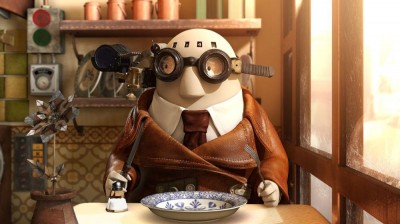
As is the nature of any collection of films, the quality is going to vary. This year’s collection is no different. (The short documentaries will not be shown.) What you get are five animated and five live action shorts — of various genres and lengths in each package. On balance, I think this year’s animated shorts are stronger than last year’s, and while there’s nothing quite as outstanding as last year’s live action winner, Curfew, there are also fewer clunkers. So it’s an improvement on the one hand, and a wash on the other.
The Animated Films
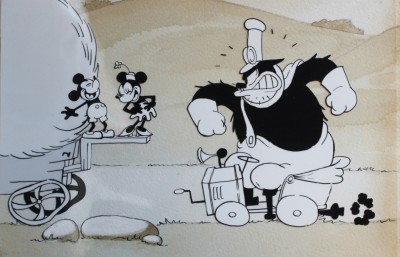
Looking at the five animated films, it’s hard to deny that the most eye-catching is Disney’s Get a Horse! directed by Lauren MacMullen. The idea behind the film is to make a brand new, hand-drawn cartoon that looks like it came from 1928 and have it run head-on into and interact with its modern 3D CG counterpart. However you feel about the modern part, the “old” cartoon is absolutely remarkable. It could, in fact, pass for a real 1928 Mickey Mouse cartoon — complete with the brasher and more fantasticated Mickey and that “rubber-hose” animation style. They were also able to find enough clips of Walt Disney doing Mickey’s voice to cover the whole film, while other original voice artists Billy Bletcher (Peg-Leg Pete) and Marceline Garner (Minnie) were augmented by Will Ryan and Russi Taylor, respectively.
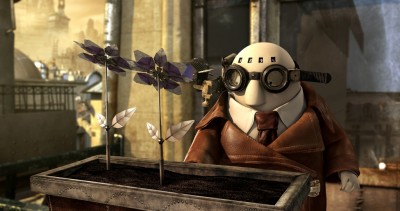
While Get a Horse! is certainly noteworthy, my personal favorite is Laurent Witz’s and Alexandre Espigares’ Mr. Hublot, a co-production of France and Luxembourg. This is a wordless film that’s essentially an animated steampunk sci-fi take on Jacques Tati — with his M. Hulot reconfigured as the robot Mr. Hublot. Like his flesh-and-blood counterpart, Mr. Hublot is a nice fellow who always means well, but for whom few things work right. Considering he lives in a wholly mechanized world where even the flowers are robotic, there’s ample room for him to be flummoxed — especially since a simple light switch defeats him. Its slender story follows his rescue of a mechanical puppy that has the problem of growing to unwieldy proportions. Now, whether this gently whimsical tale will win is another matter.
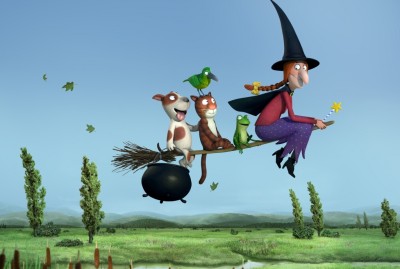
The other three animated films are a mixed bag. The Japanese entry from Shuhei Morita, Possessions, has the advantage of being very colorful and nice to look at, but even at 14 minutes, it feels rather thin. The British Room on the Broom from Jan Lachauer and Max Lang certainly has its charms. Having Simon Pegg, Gillian Anderson, Rob Brydon, Timothy Spall and Sally Hawkins among the voice talent helps — Pegg’s narration is especially well done. But the story about a kindly witch who keeps adding to the brood riding on her broom is nothing special, and the animation is pretty standard stuff. That brings us to the American entry by Daniel Sousa, Feral, the only film out of the lot I actively disliked. Its story of a feral child rescued from wolves and being subjected to a singularly sloppy attempt at domestication isn’t new and isn’t done very well. Plus, it features an animation style I simply don’t like. You may feel differently. (The animated program runs 102 minutes.)
The Live Action Films
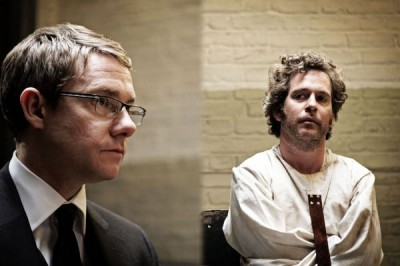
While there’s no clear standout among the live action entries, the British The Voorman Problem is a solid and thought-provoking work. First-time director Mark Gill has crafted a thoroughly professional film that makes good use of stars Martin Freeman and Tom Hollander, and it manages to keep what could have been a one-joke affair constantly intriguing. The script by Gill and Baldwin Li — drawn from David Mitchell’s novel number9dream — contains subtleties that are rare in short films of this type. The set-up is simple: A psychiatrist (Freeman) is called to a prison to certify an inmate (Hollander) (who claims to be God) as insane. The approach isn’t nearly as simplistic, being both playful and ultimately disconcerting. It’s my first choice for winner, but I suspect one film will give it stiff competition.
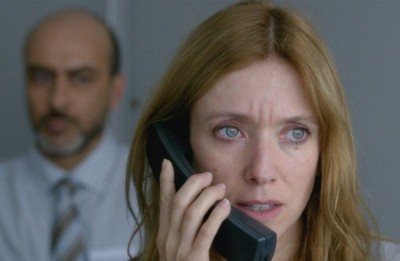
That competetion comes from the French Just Before Losing Everything from writer-director Xavier Legrand. This is a subtle work of slowly revealed suspense. A series of events — at first hard to fathom — reveal that we’re spectators to a potentially life-threatening event. Since part of what works about the film lies in its slow-reveal, I’ll say no more about the plot. It is one of the stronger entries, and it’s certainly better than the remaining three, though they mostly have their merits. The Danish Helium by Anders Walter is the most ambitious of the films in terms of special effects, which pays off. Yes, its story about an orderly in a hospital offering comfort to a dying child with stories of a place called Helium (essentially heaven with zeppelins) is a little corny and a lot manipulative, but the film’s final shot is moving, and it’s well done for what it is. It won’t surprise me if it sneaks in to win, since … well, schmaltz sells.

Much less successful is Esteban Crespo’s That Wasn’t Me. This entry from Spain is undeniably well made, and some of it works. Its basic notion of tackling the topic of child soldiers in Africa is powerful stuff, but therein lies the problem. It’s too powerful for a short film. It obviously means well, and it manages to be harrowing, but it’s never really persuasive, especially in its thumbnail sketch notions of possible redemption. If That Wasn’t Me is too serious, the Finnish entry from Selma Vilhunen, Do I Have to Take Care of Everything?, is too slight. The title is almost as long as the film, which is simply the story of a beleagured wife trying to get her family to a wedding on time. Everything that can go wrong does — at a frenetic pace. It’s pleasant enough, but it’s definitely the runt of the litter. (The live action program runs 113 minutes.)
So there you have it. Now, go see them for yourself. They’re certainly worth a look — and the showing affords you the chance to be an informed Oscar viewer. If you’re worried about losing that bathroom break, there’s always the award for sound editing. Not Rated, But Contains Adult Themes, Language and Violence.
Playing at Carolina Cinemas.




I’m glad they still show them but it sucks they charge you twice now.
I thought it would hurt attendance, but it didn’t seem to.